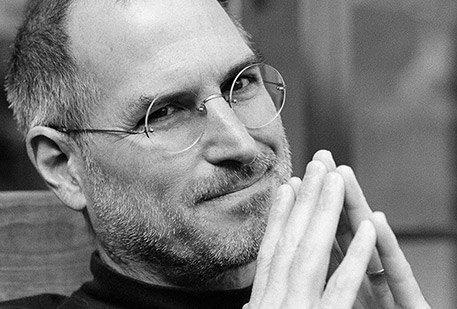The leadership evolution
If you Google the word 'leader' and 'leadership', there are 487 million hits.
That’s an awful lot of information. If you Google ‘subordinate’ and ‘follower’ there are less than 25 million hits. So, almost 20 times more has been written about leadership than about being a good subordinate. Maybe this is the crux of the leadership challenge— not enough followers! Clearly, leadership is a topic where the volume of writing does not match the value. Much is written and many of the same ideas are repeated.
The following four thoughts on leadership are based on a decade of work on how leaders have impact.
1. Leadership is about more than individual, psychological competencies; it’s also about delivering results. (An effective leadership formula is leadership = attributes * results (Results Based Leadership, Harvard Business School Press, 1999)
2. Leaders must focus outside the firm on investors and customers as well as inside because results are tied to multiple stakeholders both inside and outside the organization. When this is done well, greater market value occurs. (Why the Bottom Line Isn’t, Wiley, 2003 and soft cover- How Leaders Build Value, Wiley, 2003)
3. Individual leaders matter; but leadership matters more. It’s critical to pay attention to leadership as an organization capability not just leaders as individuals. When this capability ensures the desired customer experience, both customers and investors are served. (Capitalizing Your Capability, Harvard Business Review, 2004; Leadership Brand, Harvard Business School Press, 2007)
4. There are two kinds of individual leader competencies- a set of fundamental competencies- the leadership code, and a set of unique competencies that relate to how leaders connect employees with customers- the differentiators. (The Leadership Code, Harvard Business School Press, 2008)
Results Based Leadership- The Evolution Kickoff
In the late 1990's much of the practice of leadership was focused on individual, psychological competencies. Virtually every book then, and to a great extent now, was aimed at individual, leader competency development (the attributes of leaders). Popular examples include:
- Seven Habits of Highly Effective People
- Authenticity
- Leadership Secrets of (Attila the Hun, Thomas Jefferson etc.)
- Emotional Intelligence
- Judgment
- The Extraordinary Leader
- And so on
What makes an effective leader? The response is often the same: setting a vision, having integrity, communicating, being bold, making things happen, and other personal attributes.
Leaders do need to have effective attributes, but leadership is also about getting results.
There is an important relationship between attributes and results. Neither alone is enough. It’s the virtual cycle between them that makes all the difference. Attributes and results are connected with SO THAT and BECAUSE OF. For example, when a leader receives 360 feedback which is about her individual competencies, she must ask the “so that” query. I must improve this competency “so that” I deliver a particular result to one of my stakeholders. Alternatively, another leader delivers results and should ask the “because of” question. I delivered this result “because of” this competency I have (or lack).

Figure 1: The Virtuous Cycle of Attributes and Results
When you consider ‘Employee Results’, ‘Organization Results’, ‘Customer Results’ and ‘Investor Results’, which of the four results areas are senior executives most interested in?” With a few notable exceptions, senior executives tend to be interested in what investors want because it aligns with the executives’ personal interests and because it sustains the longevity of the firm.
Since 1990, financial results have played a decreasing role in market value so that across industries, by 2005, market value was half earnings and the other half intangibles:
Intangibles are the factors that give investors confidence in the future of your company versus other competitors in the same industry. These intangibles determine why two companies in the same industry with similar earnings might have vastly different market values. A number of studies on intangibles were synthesized into an ‘Architecture for Intangibles’ that explains how leaders increase confidence in future earnings:

Figure 2: Architecture for Intangibles
These intangibles define what leaders must do to build capabilities that investor’s value. Leadership intangibles exist in both up and down markets and include:
- Keep our promises: The organization has a track record of delivering earnings in a consistent manner
- Create a clear, compelling strategy: There is a shared direction about ‘we will win’ in our industry
- Align core competencies: We have developed targeted core competencies that are consistent with our strategic direction
- Enable organization capabilities: We have distinct social capabilities that allow us to win through our people and organization.
When capabilities integrate diverse HR practices, and when they are linked to customer expectations, they build long term sustainability.
Customer Results: Leadership Brand
A brand distinguishes a firm by making and acting on promises to customers. As a marketing concept, brand starts with the customers. Leadership brand occurs when external customer expectations are translated into internal leadership behaviours so that leaders ensure employees deliver the desired customer experience whenever they touch the customer. To do this, the firm must not only build good individual leaders but must develop leadership as an organization capability, recognized inside the firm and also by the market. Figure 3: 
Leadership brand may be created by 6 integrated steps. Figure 4: 
Leadership Code: Back to the Basics
Faced with the incredible volume of information about leadership, Ulrich and Smallwood turned to recognized experts in the field who had already spent years sifting through the evidence and developing their own theories. These thought leaders had each published a theory of leadership based on a long history of leadership research and empirical assessment of what makes effective leadership. Collectively, they have written over 50 books on leadership and performed well over 2,000,000 leadership 360’s. They are the “thought leaders” of this field.
In discussions with the recognized experts, the focus was on two simple questions whose answers had always been elusive:
- What percent of effective leadership is basically the same?
- If there are common rules that all leaders must master, what are they?
To the first question, the experts varied as they estimated that somewhere in the range of 50 to 85% of leadership characteristics were shared across all effective leaders. The range is fairly broad, to be sure, but consistent. From the body of interviews conducted, it was concluded that 60-70% of leadership effectiveness would be contained in a Leadership Code if it could be cracked. Synthesizing the data, the interviews, and their own research and experience, a framework emerged that Ulrich and Smallwood call the Leadership Code.
The following figure synthesizes the Leadership Code and captures the five rules of leadership that capture leadership DNA. These five rules can be readily applied to any group of leaders:

Figure 5: The Leadership Code
Rule 1: Shape the future. This rule is embodied in the strategist dimension of the leader. Strategists answer the question “where are we going?” and make sure that those around them understand the direction as well. They not only envision, but also can create a future. They figure out where the organization needs to go to succeed, they test these ideas pragmatically against current resources (money, people, organizational capabilities), and they work with others to figure out how to get from the present to the desired future. Strategists have a point of view about the future and are able to position their organization to create and respond to that future. The rules for strategists are about creating, defining, and delivering principles of what can be.
Rule 2: Make things happen. Turn what you know into what you do. The Executor dimension of the leader focuses on the question “How will we make sure we get to where we are going?” Executors translate strategy into action. Executors understand how to make change happen, to assign accountability, to know which key decisions to take and which to delegate, and to make sure that teams work well together. They keep promises to multiple stakeholders. Executors make things happen, and put the systems in place for others to do the same. The rules for executors revolve around disciplines for getting things done, and the technical expertise to get the right things done right.
Rule 3: Engage today’s talent. Leaders who optimize talent today answer the question “Who goes with us on our business journey?” Talent managers know how to identify, build and engage talent to get results now. Talent managers identify what skills are required, draw talent to their organizations, engage them, communicate extensively, and ensure that employees turn in their best efforts. Talent managers generate intense personal, professional and organizational loyalty. The rules for talent managers center around resolutions that help people develop themselves for the good of the organization.
Rule 4: Build the next generation. Leaders who are Human Capital Developers answer the question, “Who stays and sustains the organization for the next generation?” Talent Managers ensure shorter-term results through people while Human Capital Developers ensure that the organization has the longer-term competencies required for future strategic success. Just as good parents invest in helping their children succeed, human capital developers help future leaders be successful. Human capital developers throughout the organization build a workforce plan focused on future talent, understand how to develop the future talent, and help employees see their future careers within the company. Human capital developers ensure that the organization will outlive any single individual. Human capital developers install rules that demonstrate a pledge to building the next generation of talent.
Rule 5: Invest in yourself. At the heart of the Leadership Code – literally and figuratively – is Personal Proficiency. Effective leaders cannot be reduced to what they know and do. Who they are as human beings has everything to do with how much they can accomplish with and through other people. Leaders are learners: from success, failure, assignments, books, classes, people, and life itself. Passionate about their beliefs and interests, they expend an enormous personal energy and attention on whatever matters to them. Effective leaders inspire loyalty and goodwill in others because they themselves act with integrity and trust. Decisive and impassioned, they are capable of bold and courageous moves. Confident in their ability to deal with situations as they arise, they can tolerate ambiguity.
Here are some summary observations:
- All leaders must excel at Personal Proficiency. Without the foundation of trust and credibility, you cannot ask others to follow you. While individuals may have different styles (introvert vs. extrovert, intuitive vs. sensing, etc.), any individual leader must be seen as having personal proficiency to engage followers. This is probably the toughest of the five domains to train, and some individuals are naturally more capable than others.
- Effective leaders have one towering strength. Most successful leaders have at least one of the other four roles in which they excel. Most are personally predisposed to one of the four areas. These are the signature strengths of your leaders.
- All leaders must be at least average in his or her “weaker” leadership domains. It is possible to train someone to learn how to be strategic, execute, manage talent, and develop future talent. There are behaviours and skills that can be identified, developed, and mastered.
- The higher up the organization that the leader rises, the more he or she needs to develop excellence in more than one of the four domains.
What’s next? There is more to do. How do investors, venture capitalists, private equity funds and others determine quality of leadership during due diligence processes? Initial research into this area and the global economic condition suggests current approaches are relatively primitive. Future work will continue to flesh out the mix of attributes and results that characterize effective individual leaders and organization leadership capabilities.
This is a DBRDirect article, reprinted with permission of Dave Ulrich, Professor of Business Administration at the University of Michigan and co-founder of the RBL Group, and Norm Smallwood, Partner and co-founder of the RBL Group.This is a DBRDirect article, reprinted with permission of Dave Ulrich, Professor of Business Administration at the University of Michigan and co-founder of the RBL Group, and Norm Smallwood, Partner and co-founder of the RBL Group.
 CA-EN
CA-EN UK
UK AU
AU US
US NZ
NZ PH
PH ZA
ZA SG
SG HK
HK


